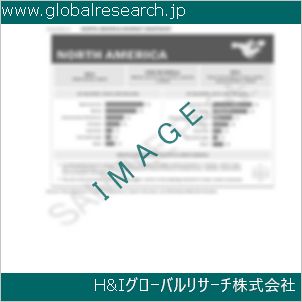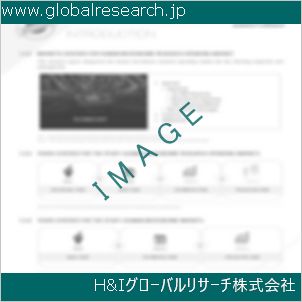Table of Contents
1 Industry Overview of Phosphine
1.1 Definition and Specifications of Phosphine
1.1.1 Definition of Phosphine
1.1.2 Specifications of Phosphine
1.2 Classification of Phosphine
1.3 Applications of Phosphine
1.3.1 Nuclear Application
1.3.2 Non-Nuclear Application
1.4 Industry Chain Structure of Phosphine
1.5 Industry Overview and Major Regions Status of Phosphine
1.5.1 Industry Overview of Phosphine
1.5.2 Global Major Regions Status of Phosphine
1.6 Industry Policy Analysis of Phosphine
1.7 Industry News Analysis of Phosphine
2 Manufacturing Cost Structure Analysis of Phosphine
2.1 Raw Material Suppliers and Price Analysis of Phosphine
2.2 Equipment Suppliers and Price Analysis of Phosphine
2.3 Labor Cost Analysis of Phosphine
2.4 Other Costs Analysis of Phosphine
2.5 Manufacturing Cost Structure Analysis of Phosphine
2.6 Manufacturing Process Analysis of Phosphine
3 Technical Data and Manufacturing Plants Analysis of Phosphine
3.1 Capacity and Commercial Production Date of Global Phosphine Major Manufacturers in 2023
3.2 Manufacturing Plants Distribution of Global Phosphine Major Manufacturers in 2023
3.3 R&D Status and Technology Source of Global Phosphine Major Manufacturers in 2023
3.4 Raw Materials Sources Analysis of Global Phosphine Major Manufacturers in 2023
4 Capacity, Production and Revenue Analysis of Phosphine by Regions, Types and Manufacturers
4.1 Global Capacity, Production and Revenue of Phosphine by Regions 2019-2024
4.2 Global and Major Regions Capacity, Production, Revenue and Growth Rate of Phosphine 2019-2024
4.3 Global Capacity, Production and Revenue of Phosphine by Types 2019-2024
4.4 Global Capacity, Production and Revenue of Phosphine by Manufacturers 2019-2024
5 Price, Cost, Gross and Gross Margin Analysis of Phosphine by Regions, Types and Manufacturers
5.1 Price, Cost, Gross and Gross Margin Analysis of Phosphine by Regions 2019-2024
5.2 Price, Cost, Gross and Gross Margin Analysis of Phosphine by Types 2019-2024
5.3 Price, Cost, Gross and Gross Margin Analysis of Phosphine by Manufacturers 2019-2024
6 Consumption Volume, Consumption Value and Sale Price Analysis of Phosphine by Regions, Types and Applications
6.1 Global Consumption Volume and Consumption Value of Phosphine by Regions 2019-2024
6.2 Global and Major Regions Consumption Volume, Consumption Value and Growth Rate of Phosphine 2019-2024
6.3 Global Consumption Volume and Consumption Value of Phosphine by Types 2019-2024
6.4 Global Consumption Volume and Consumption Value of Phosphine by Applications 2019-2024
6.5 Sale Price of Phosphine by Regions 2019-2024
6.6 Sale Price of Phosphine by Types 2019-2024
6.7 Sale Price of Phosphine by Applications 2019-2024
6.8 Market Share Analysis of Phosphine by Different Sale Price Levels
7 Supply, Import, Export and Consumption Analysis of Phosphine
7.1 Supply, Consumption and Gap of Phosphine 2019-2024
7.2 Global Capacity, Production, Price, Cost, Revenue, Supply, Import, Export and Consumption of Phosphine 2019-2024
7.3 USA Capacity, Production, Price, Cost, Revenue, Supply, Import, Export and Consumption of Phosphine 2019-2024
7.4 EU Capacity, Production, Price, Cost, Revenue, Supply, Import, Export and Consumption of Phosphine 2019-2024
7.5 China Capacity, Production, Price, Cost, Revenue, Supply, Import, Export and Consumption of Phosphine 2019-2024
7.6 Japan Capacity, Production, Price, Cost, Revenue, Supply, Import, Export and Consumption of Phosphine 2019-2024
8 Major Manufacturers Analysis of Phosphine
8.1 Manufacturer One
8.1.1 Company Profile
8.1.2 Product Picture and Specifications
8.1.2.1 Type I
8.1.2.2 Type II
8.1.2.3 Type III
8.1.3 Capacity, Production, Price, Cost, Gross and Revenue
8.1.4 Contact Information
8.2 Manufacturer Two
8.2.1 Company Profile
8.2.2 Product Picture and Specifications
8.2.2.1 Type I
8.2.2.2 Type II
8.2.2.3 Type III
8.2.3 Capacity, Production, Price, Cost, Gross and Revenue
8.2.4 Contact Information
8.3 Manufacturer Three
8.3.1 Company Profile
8.3.2 Product Picture and Specifications
8.3.2.1 Type I
8.3.2.2 Type II
8.3.2.3 Type III
8.3.3 Capacity, Production, Price, Cost, Gross and Revenue
8.3.4 Contact Information
8.4 Manufacturer Four
8.4.1 Company Profile
8.4.2 Product Picture and Specifications
8.4.2.1 Type I
8.4.2.2 Type II
8.4.2.3 Type III
8.4.3 Capacity, Production, Price, Cost, Gross and Revenue
8.4.4 Contact Information
8.5 Manufacturer Five
8.5.1 Company Profile
8.5.2 Product Picture and Specifications
8.5.2.1 Type I
8.5.2.2 Type II
8.5.2.3 Type III
8.5.3 Capacity, Production, Price, Cost, Gross and Revenue
8.5.4 Contact Information
…
9 Marketing Trader or Distributor Analysis of Phosphine
9.1 Marketing Channels Status of Phosphine
9.2 Traders or Distributors with Contact Information of Phosphine by Regions
9.3 Ex-work Price, Channel Price and End Buyer Price Analysis of Phosphine
9.4 Regional Import, Export and Trade Analysis of Phosphine
10 Industry Chain Analysis of Phosphine
10.1 Upstream Major Raw Materials Suppliers Analysis of Phosphine
10.1.1 Major Raw Materials Suppliers with Contact Information Analysis of Phosphine
10.1.2 Major Raw Materials Suppliers with Supply Volume Analysis of Phosphine by Regions
10.2 Upstream Major Equipment Suppliers Analysis of Phosphine
10.2.1 Major Equipment Suppliers with Contact Information Analysis of Phosphine
10.2.2 Major Equipment Suppliers with Product Pictures Analysis of Phosphine by Regions
10.3 Downstream Major Consumers Analysis of Phosphine
10.3.1 Major Consumers with Contact Information Analysis of Phosphine
10.3.2 Major Consumers with Consumption Volume Analysis of Phosphine by Regions
10.4 Supply Chain Relationship Analysis of Phosphine
11 Development Trend of Analysis of Phosphine
11.1 Capacity, Production and Revenue Forecast of Phosphine by Regions and Types
11.1.1 Global Capacity, Production and Revenue of Phosphine by Regions 2024-2029
11.1.2 Global and Major Regions Capacity, Production, Revenue and Growth Rate of Phosphine 2024-2029
11.1.3 Global Capacity, Production and Revenue of Phosphine by Types 2024-2029
11.2 Consumption Volume and Consumption Value Forecast of Phosphine by Regions, Types and Applications
11.2.1 Global Consumption Volume and Consumption Value of Phosphine by Regions 2024-2029
11.2.2 Global and Major Regions Consumption Volume, Consumption Value and Growth Rate of Phosphine 2024-2029
11.2.3 Global Consumption Volume and Consumption Value of Phosphine by Types 2024-2029
11.2.4 Global Consumption Volume and Consumption Value of Phosphine by Applications 2024-2029
11.3 Supply, Import, Export and Consumption Forecast of Phosphine
11.3.1 Supply, Consumption and Gap of Phosphine 2024-2029
11.3.2 Global Capacity, Production, Price, Cost, Revenue, Supply, Import, Export and Consumption of Phosphine 2024-2029
11.3.3 USA Capacity, Production, Price, Cost, Revenue, Supply, Import, Export and Consumption of Phosphine 2024-2029
11.3.4 EU Capacity, Production, Price, Cost, Revenue, Supply, Import, Export and Consumption of Phosphine 2024-2029
11.3.5 China Capacity, Production, Price, Cost, Revenue, Supply, Import, Export and Consumption of Phosphine 2024-2029
11.3.6 Japan Capacity, Production, Price, Cost, Revenue, Supply, Import, Export and Consumption of Phosphine 2024-2029
12 New Project Investment Feasibility Analysis of Phosphine
12.1 New Project SWOT Analysis of Phosphine
12.2 New Project Investment Feasibility Analysis of Phosphine
13 Conclusion of the Global Phosphine (CAS 7803-51-2) Industry 2024 Market Research Report
| ※参考情報 リン化水素(Phosphine)は、化学式 PH₃ で表される無機化合物であり、リンの水素化物です。リン化水素は通常、無色または白色の気体で、特有の魚のような臭いを持っています。この物質は、リンの酸化状態の一形態であり、リンの最も単純な化合物の一つです。本稿ではリン化水素の概念について、定義、特徴、種類、用途、関連技術などを述べます。 リン化水素の定義は、その化学的性質から来ています。これは、リン原子1つと水素原子3つからなる分子であり、通常は標準状態で気体として存在します。リン化水素は工業的に重要な化合物であり、様々なプロセスに利用されています。特に、その反応性や特筆すべき物理的特性から、農業や化学産業において広範囲な用途があります。 リン化水素の特徴について考えると、まずその毒性や可燃性が挙げられます。リン化水素は非常に有毒であり、吸入すると呼吸器系に深刻な影響を及ぼす可能性があります。また、非常に可燃性であり、空気中で自発的に発火しやすい性質があります。このため、取扱いには細心の注意が必要です。加えて、リン化水素は水に溶けにくいですが、エタノールやベンゼンといった有機溶媒には溶けます。 リン化水素の種類としてはいくつかのバリエーションがありますが、最も一般的なのは純粋なリン化水素です。そのほか、リン化水素と他の化合物を混合したものや、工業用に改良された形態なども存在します。また、リン化水素を生成するための触媒反応や、他の化学物質と反応して新しい物質を生成する反応も研究されています。 リン化水素の主な用途としては、農業における殺虫剤や殺菌剤としての利用が挙げられます。特に、穀物や果物の保存において、害虫や病原菌の駆除に効果的です。リン化水素は、穀物の貯蔵施設に注入することで、長期間にわたって害虫を防ぐことができます。このように、農業においては、作物を守るための重要な資源となっています。 さらに、リン化水素は化学工業でも広く利用されています。特に、リン化水素は有機合成の出発物質として利用され、さまざまな化学反応において重要です。例えば、リン化水素は工業的に重要な化合物であるトリフェニルリンの合成に用いられています。また、リン化水素は電子デバイスや半導体に関する研究においても関与しています。近年では、ナノテクノロジーや材料科学の分野でもその利用が進んでいます。 関連技術として、リン化水素を生成するための安全かつ効率的な方法が求められています。たとえば、リン化水素の合成は、金属リンと水素ガスを高温下で反応させるプロセスによって行うことが一般的です。しかし、これには高温高圧の条件が必要で、取り扱いには特別な装置や技術が求められます。最近では、新しい触媒や反応条件を利用して、より低温・低圧でのリン化水素の合成が試みられるようになっています。 また、リン化水素の安全な取り扱いに関する研究も進められています。毒性や可燃性のために、適切な防護措置が必要です。このため、工場や研究室では、リン化水素の取り扱いに関する厳格な規制やガイドラインが設けられています。具体的には、適切な換気システムや防爆装置、個人保護具の使用が推奨されています。 さらに、リン化水素の環境への影響についても注意が必要です。農業用途においては、残留物が土壌や水源に影響を与える可能性があるため、その施用方法やタイミングには正確な管理が求められます。最近では、持続可能な農業の観点から、化学薬品の使用を最小限に抑える試みも進んでいます。 リン化水素は、その特異な性質と幅広い用途から、今後も化学産業と農業の重要な成分であり続けるでしょう。その利用と取り扱いには慎重さと正確性が求められますが、適切な技術と知識があれば、安全にその利点を最大限に活かすことが可能です。今後の研究によって、リン化水素のさらなる活用法が見つかり、より安全で環境に優しい利用が進むことが期待されます。 |
❖ 免責事項 ❖
http://www.globalresearch.jp/disclaimer












